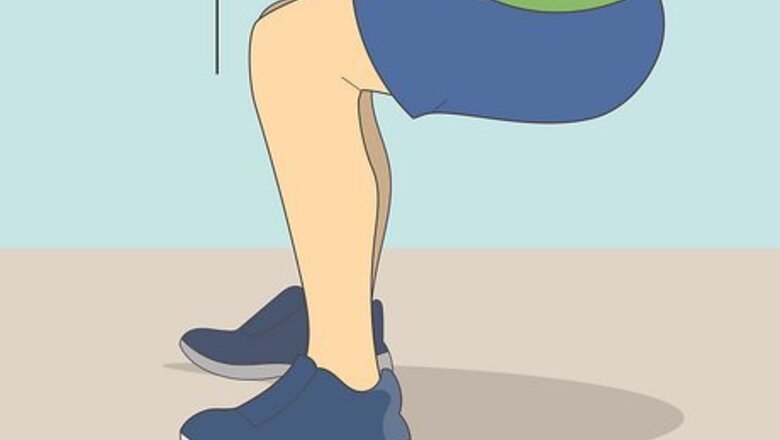
views
Protecting Your Knees
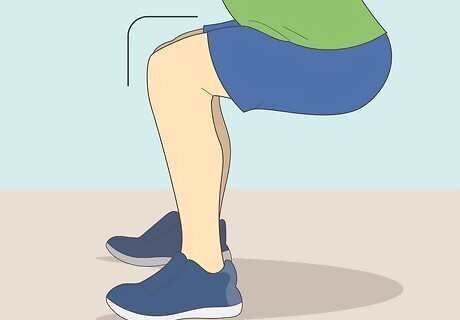
Bend your knees. In essence, "squatting" simply means to bend your knees, bringing your backside closer to the floor. For best results, try bending your knees to a 90-degree angle, then standing back up.
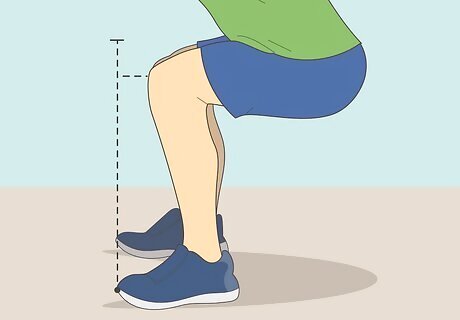
Keep your knees behind your toes. This protects your knees and back and helps you achieve maximum results. When you move into a squat, bend your knees so that they move directly over your feet, without going further than your toes.
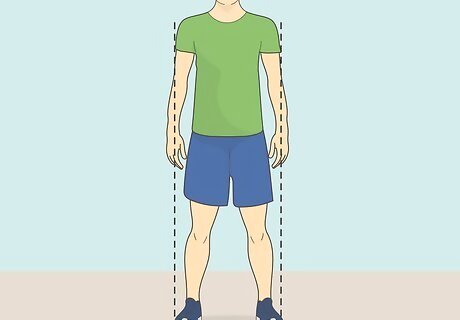
Keep your feet shoulder-width apart. For a standard free squat, start by keeping your feet under your shoulders. This help to avoid stress on your knees.
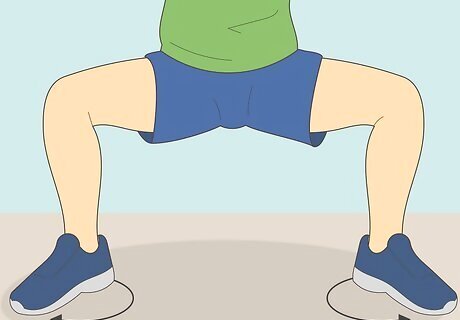
Angle your feet for plié squats. A plié squat is a free squat done with a wide stance. For these, it is important to angle your feet out and to bend your knees so they move directly over your feet. Begin by doing these at only a half-range of motion, and work up to getting your knee bends to 90 degrees.
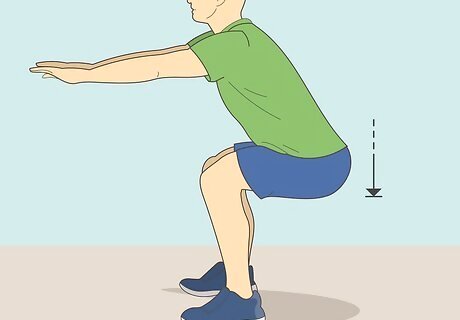
Stop at the bottom. After you build up some leg strength, you may begin to "break 90," or allow your squat to deepen more than a 90-degree bend in your knees. However, it is important to stop when your thighs lightly come into contact with your calves. Going beyond this can place unnecessary stress on your knees.
Protecting Your Back
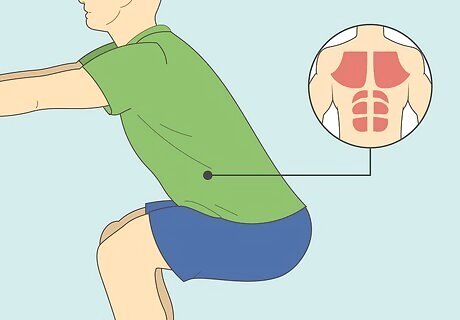
Keep your core tight and chest upright. If not done carefully, squatting can put a lot of strain on your lower back. Protect your back and ensure proper form by keeping your core muscles firmly engaged. Imagine you are contracting your belly button toward the middle of your back. As you keep your tummy tight, this should help you to hold your chest upright. Imagine that you are trying to let sun shine on the top of your clavicle and chest.
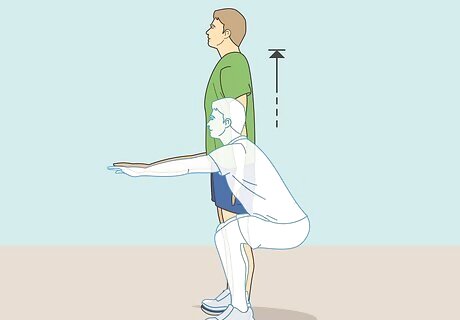
Avoid bouncing. Descend with control and ascend in any manner, however do not ascend without braking at the top. When you see professional or elite athletes doing squatting movements very fast, they are moving with control.
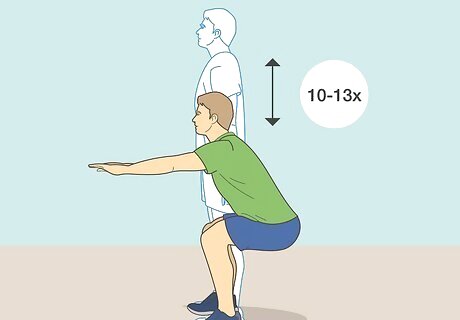
Increase your reps over time. Build your squatting ability over several workouts by adding a repetition or two every workout. Squat as often as twice a week. Begin by doing just one set of 10-13 reps (or repetitions). Add a couple of reps, or a set, each time you work out. Build up strength and increase your reps slowly in order to protect your spine and avoid injury.
Trying Different Varieties
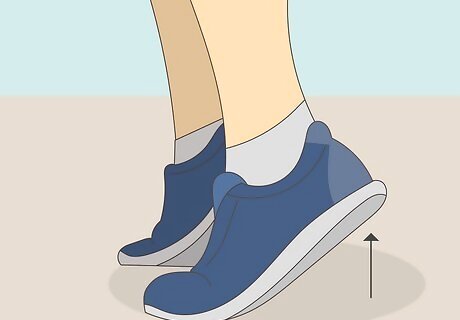
Do free squats on the balls of your feet. If you come up to the balls of your feet while squatting (also called relevé) you will work your calf muscles. You try staying up on your toes the whole time, or simply doing a calf-raise at the top of each squat.
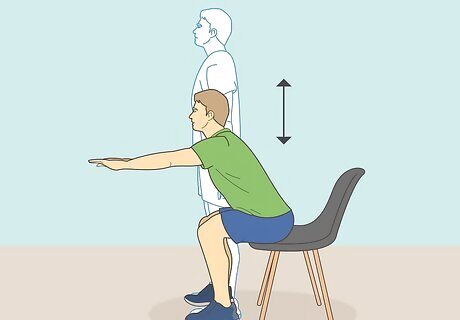
Try chair squats. Instead of moving up and down in your free squats, try sitting back and doing an isometric hold. That is, hold yourself in the bottom squat position as if you are sitting in a chair. Try holding this for 30 seconds, and adding time as you get stronger. You can also try doing this against a wall. EXPERT TIP Laila Ajani Laila Ajani Fitness Trainer Laila Ajani is a Fitness Trainer and founder of Push Personal Fitness, a personal training organization based in the San Francisco Bay Area. With over 10 years as a trainer and exercise specialist, Laila has expertise in competitive athletics (gymnastics, powerlifting, and tennis), personal training, distance running, and Olympic lifting. Laila is certified by the National Strength & Conditioning Association (NSCA), USA Powerlifting (USAPL), and she is a Corrective Exercise Specialist (CES). Laila Ajani Laila Ajani Fitness Trainer For beginners, chair or box squats can be a good variation. Doing a high rep of easier squats can help you build strength and train your body to reach the proper squat positions. If you're currently unable to do squats, start with lunges until you gain strength, and then try squats later on.
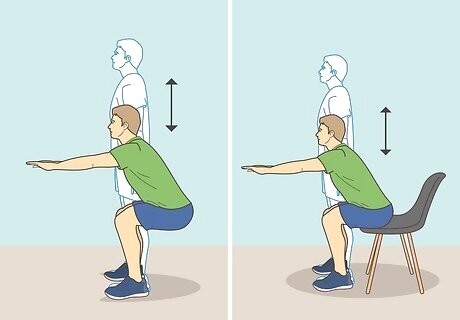
Mix up your workouts. Doing a variety of squats works more muscles and makes your workout varied and more fun. Additionally, when the leg muscles are strengthened, a person's metabolism becomes more active. Performing a mix of different squat exercises works more muscles and revs up your metabolism to burn more calories. Mark Rippetoe Mark Rippetoe, Strength and Conditioning Coach The low-bar back squat allows the use of heavier weights and stimulates the body's largest muscle groups. Execute it with a shoulder-width stance, knees aligned with feet, hips back, chest up, and core braced. Descend until thighs are parallel to the floor, then drive through the heels back to standing.



















Comments
0 comment